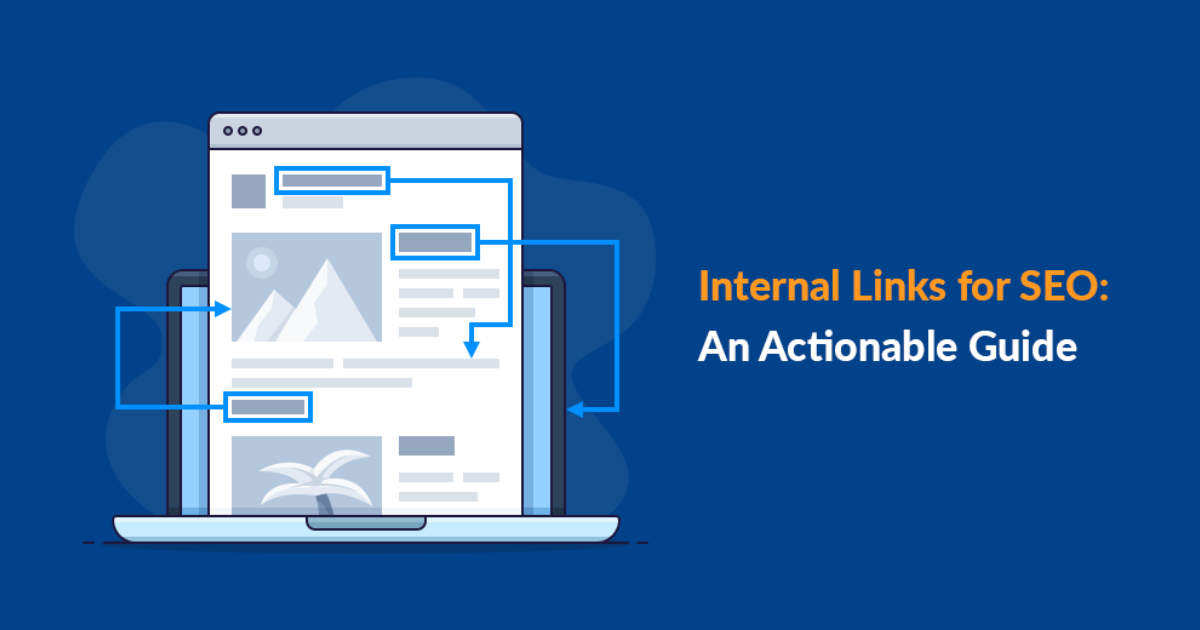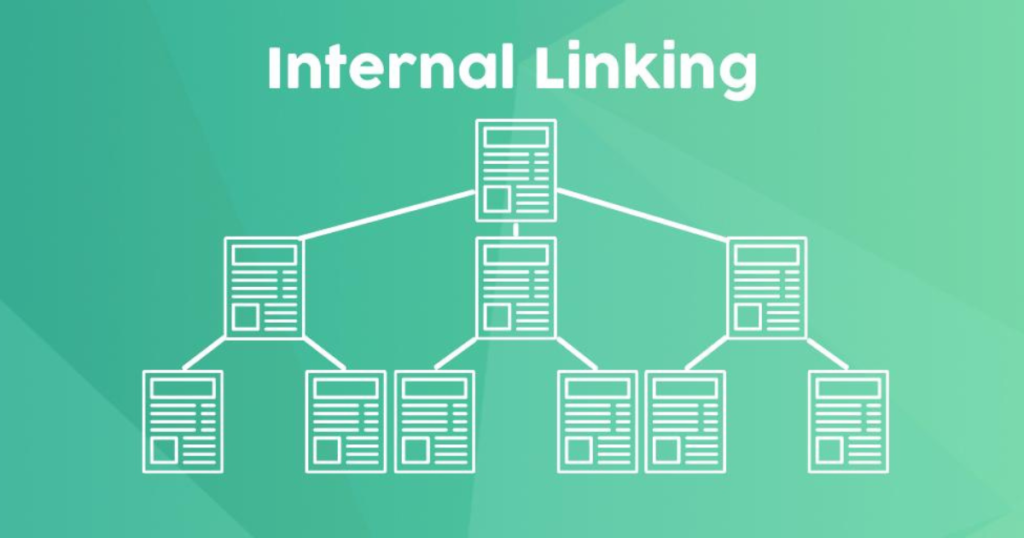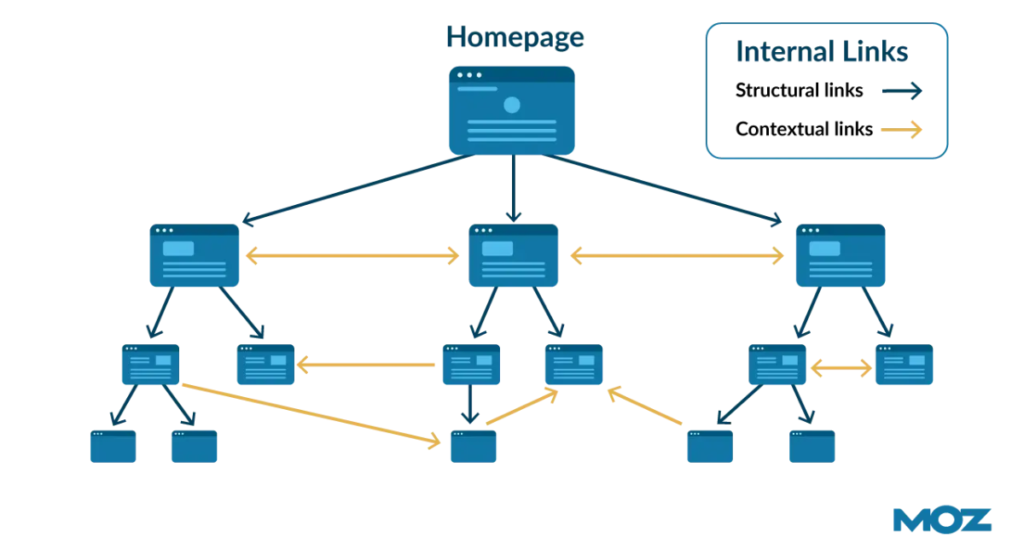
Abdul Yaseen
September 7, 2024
Did you know that internal links can boost your SEO ranking by up to 200%? Many website owners don’t realize how powerful internal linking is for better rankings. Knowing the right number of internal links per page can greatly improve your site’s performance and user experience.
This section will cover why internal linking is key, what affects the number of links, and the best numbers for better site visibility.
Internal linking is key for SEO success. It helps search engines crawl and index your site better. It also makes your site easier for users to navigate.
By using internal links, you help search engines understand your site’s structure. This makes your content more discoverable, which can boost your rankings. So, knowing how to use internal linking is crucial for better web presence.
Internal links engage users and offer many benefits. They encourage visitors to explore more of your site. This leads to higher engagement and a better user experience.
Internal links also help search engines see your site’s hierarchy. This can make certain pages more authoritative. This, in turn, can improve your site’s visibility in search results. So, make sure to include internal linking in your SEO plan.
Aspect | Internal Linking | Benefits |
Crawling | Facilitates efficient crawling by search engines | Improved visibility and indexation |
User Experience | Guides visitors through relevant content | Reduced bounce rates and increased session duration |
SEO Benefits | Enhances content discoverability and ranking | Improves organic traffic growth |
Internal links connect different pages on the same website. They are not like external links, which take you to other sites. Instead, they help users and search engines find their way around your site.
These links are key to a good internal linking strategy. They make it easy to explore and find content on your site.
The types of internal links include:
Knowing about internal links and SEO is important for your site. Good link building tactics use these links to boost your site’s SEO. Use descriptive anchor text to give context about the linked page. This improves both user experience and search engine rankings.
Internal links play a big role in guiding users and search engines. When used well, they can increase page authority and improve your site’s structure. This helps your overall SEO efforts.
Finding the right number of internal links on a page is key for SEO. It’s usually between 3 to 10 links, depending on your content’s length and relevance. A good internal linking strategy makes your site easier to use and helps it rank better in search results.
Several things affect how many internal links you should use. Here are a few:
Having too many internal links can hurt your site. It can make your page less authoritative and confuse users. A balanced approach keeps things clear and focused. This way, your links do their job without overwhelming your visitors.

Using a smart internal linking strategy can make your website better and more visible. It helps users find their way around easily, making your site more fun to explore. This approach also helps your site’s authority and search rankings.
Good internal links make it easy for visitors to find what they need. When users can easily find what they’re looking for, they tend to stay longer. This leads to more engagement and more visits.
It also helps visitors find key pages that help them make choices.
Internal links help spread page authority across your site. By linking well, you make your important pages more valuable. Search engines see your link structure and boost the visibility of your content.
Using effective internal linking techniques is key to bettering your website’s SEO. Following best practices helps build a strong internal structure. This structure boosts both user experience and search engine visibility.
Always link to content that’s relevant. This makes your site easier to navigate and keeps visitors interested. Use descriptive anchor text. This kind of text gives context and encourages users to click on links, following internal links best practices.
Don’t overdo it with internal links on one page. While it might seem good to link a lot, too many links can overwhelm users. This makes it easier for them to focus on your main content and enjoy a smoother browsing experience.
Make sure all links work and lead to quality content. Broken links can really hurt your SEO. Regular checks can spot any link problems, keeping your site credible and authoritative.
Best Practice | Description | Benefits |
Link to Relevant Content | Direct users to pages that add value in relation to the content they are consuming. | Improves user engagement and reduces bounce rates. |
Use Descriptive Anchor Text | Describe what users will find on the linked page. | Enhances click-through rates and aids in search engine understanding. |
Avoid Excessive Internal Links | Limit the number of links per page to maintain focus. | Facilitates user navigation without overwhelming them. |
Ensure Functional Links | Check for broken links and fix them regularly. | Maintains authority and prevents user frustration. |
By sticking to these internal links best practices, you can improve your website’s SEO and user experience.

Creating the best internal linking needs a careful plan. It’s important to find the right number of links to help both users and search engines. Too many links can confuse people and hurt your site’s clarity.
Your goal is to make links that help users find good content. This boosts your site’s authority and encourages people to look at more pages. A good linking system makes sure links are in the right place and easy to understand.
It’s important to check how your links are doing often. Use tools like Google Search Console or SEO software to see how your links help your site. Look at things like how many people click on links and how often pages are viewed to see if your links are working well.
To boost your website’s performance, focusing on internal links for SEO is key. Internal links help search engines and users navigate your site. By improving your internal linking, you can increase your site’s visibility and internal links and SEO rankings.
Use internal links wisely in your blog posts. Link to content that supports the main topic and adds value to readers. This helps search engines understand your content better. It also makes your site more user-friendly and search engine-friendly.
Use high-traffic pages as a base for your internal links. Linking new content to these pages boosts their visibility. This strategy is effective in improving other pages on your site.
Keep an eye on your internal links as your site grows. Update them to keep your linking strategy effective. Track how your links perform to see where you can improve.
By following these tips, you’ll improve your internal links for SEO. This will greatly enhance your site’s performance and search ranking.

A well-structured internal link structure is key for better SEO. It helps both users and search engines find your content easily. This makes your website more visible and user-friendly.
Organizing content into categories helps a lot. It makes your site easy to navigate and understand. This approach is great for SEO because it helps search engines index your site better.
Here’s a quick look at the benefits of a good hierarchical linking approach:
Benefit | Description |
Improved User Experience | Users find what they’re looking for fast, making them happier. |
Better SEO Performance | Search engines can index your site better, which helps your ranking. |
Focused Content Promotion | Internal links can help promote specific pages more effectively. |
In short, using a hierarchical linking approach is crucial for your website’s success. It improves navigation and how search engines see your content. This leads to better visibility and authority online.
Internal linking is key to making your site better. Yet, many don’t see its importance. Knowing common mistakes can greatly improve your site’s performance. It’s crucial to avoid these errors for better SEO.
Using generic anchor texts is a common mistake. Phrases like “click here” don’t help your site’s relevance. Use descriptive anchor texts that clearly explain the content.
Another mistake is not updating old content with new links. Regularly updating your posts with fresh links improves user experience. Search engines also value this practice.
Linking to low-quality pages weakens your internal links. Focus on quality to boost your site’s credibility. This highlights the importance of internal links for SEO.
By avoiding these mistakes, you can improve your internal linking. This will help you use it to its full potential.
Using effective internal linking can really boost your site’s SEO. A good internal links seo strategy makes your site easier to use and helps search engines find your content. Create content hubs or pillar pages to group related topics together. This makes it easy for both users and search engines to find their way around your site.
Internal linking optimization techniques like breadcrumb links make it easier to navigate your site. Breadcrumbs show users how to get back to previous pages, making your site more user-friendly. They also help spread link equity, which can improve your site’s structure and encourage users to explore more.
For instance, if you have a blog post on SEO strategies, link to other articles on keyword research, meta tags, and link building. This shows you have a solid internal links seo strategy and provides a comprehensive view of the topic.
The benefits of these effective internal linking for seo methods are clear. They help keep users engaged, reducing bounce rates and increasing time on site. Search engines take notice of this, which can lead to better rankings. Make sure to link words and phrases that match what users are looking for, making it easy for them to find what they need.
Here are some techniques to improve your internal linking strategy:
By using these internal linking techniques, you can greatly improve your site’s SEO and give your users a better experience.
Mastering internal linking is key for your website’s SEO success. It makes your site easier to navigate and improves user experience. A good internal linking strategy helps both search engines and visitors find what they need.
Regularly check and update your linking strategies. The world of search engines is always changing. By making your site’s links better, you help both your visitors and search engines.
Spending time on your internal linking strategy pays off. It can boost your search rankings and make users happier. Use internal links to make your site more user-friendly and successful.
Aim for 3 to 10 internal links per page. This depends on the page's length and how relevant the links are. It's important to find a balance to keep your site's authority strong and easy to navigate.
A good internal linking strategy makes your site easier to navigate. It also boosts your page's authority and helps search engines index your site better. This can lead to higher rankings and more people staying on your site longer.
Internal linking is key for SEO because it helps search engines understand your site better. It also makes your site easier for visitors to explore. This is important for getting more organic traffic.
Yes, internal links can greatly affect your site's ranking. By organizing your links well, you help search engines see your content's structure. This can improve your SEO performance.
Use analytics tools to track how users interact with your site. Look at bounce rates and page authority. This will help you see if your internal linking is working and make needed changes.
Transforming businesses with expert SEO, web design and e-commerce solutions for impactful online growth.
Do not want to miss any news, updates, notice or any offer on our products, then please subscribe to our mailing list.
Copyright © 2024 SkySEOprime | Powered by Sky SEO Prime